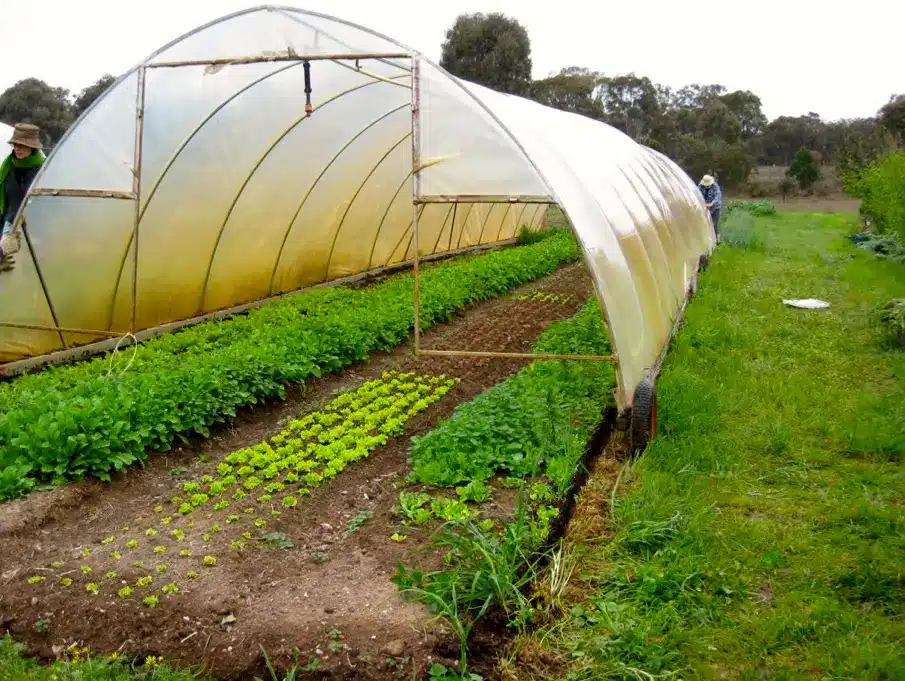State Guide: Buying Greenhouses in Maine
Maine’s climate presents unique challenges for outdoor growing, with temperatures rising almost 3.5°F since the beginning of the 20th century and winters warming twice as fast as summers. The state’s northerly latitude and coastal influence create distinct growing conditions that make greenhouse cultivation particularly valuable.
Are you looking for greenhouses for sale in Maine? Read on before making your purchase.
Maine Climate Overview
Maine’s weather patterns require growers to adapt to cold winters, mild summers, and changing precipitation levels. Understanding these conditions ensures successful greenhouse gardening.
Winters
Maine experiences cold, snowy winters with temperatures ranging from 25°F in the south to below 15°F in northern regions. Snowfall averages 50-110 inches annually, depending on location.
Summers
Summers remain mild, with averages from 60°F in the north to 70°F in the south. Coastal areas benefit from cooler breezes, while inland regions may experience occasional heatwaves.
Precipitation
Annual precipitation ranges from 40-80 inches, with frequent snowfall in winter and moderate rain throughout the year. Extreme weather events, including heavy rainstorms, have become more common.
Growing Season
The frost-free growing season lasts 100-140 days, significantly shorter than other states. Late spring frosts and early fall frosts often limit traditional outdoor cultivation.
Challenges of Growing in Maine
Outdoor gardening in Maine requires overcoming its short growing season, unpredictable weather, and pest pressures. Strategic planning is essential for success.
Short Growing Seasons
Maine’s limited frost-free period restricts the range of crops that can thrive without greenhouse protection.
Weather Variability
Extreme precipitation events, including snowstorms and droughts, challenge outdoor growers and can damage crops or delay planting schedules.
Temperature Fluctuation
Spring frosts and sudden temperature swings in autumn can harm early plantings and reduce yields for cold-sensitive crops.
Pest and Disease Pressure
Mild summers and wet conditions foster pests such as aphids and slugs, along with fungal diseases that can spread quickly in unprotected outdoor settings.

Benefits of Greenhouses in Maine
- Extending the growing season significantly, enabling cultivation even during harsh winters.
- Protecting crops from frost, heavy snowfall, and strong winds.
- Conserving water through controlled irrigation systems that mitigate drought impacts.
- Creating a barrier against pests and reducing the spread of fungal diseases.
Best Greenhouse Designs for Maine
Greenhouses in Maine must withstand harsh winters and variable precipitation. Heavy-duty steel or aluminum frames provide durability, while double-wall polycarbonate panels offer superior insulation and remain one of the best light diffusion or deprivation materials.
Gothic Arch greenhouse roofs are recommended since they actively prevent snow accumulation, making them ideal for areas with heavy snowfall. Semi-gable designs also work dependably in regions with milder winters but frequent rain.
Passive solar heating, supplemented by propane or geothermal systems, ensures year-round use. Wet wall cooling systems and automated vents help maintain optimal temperatures during Maine’s milder summers.

Permits & Policies for Maine Greenhouses
Maine greenhouses are subject to local building codes and zoning laws. Luckily, recent legislative changes have simplified requirements for smaller agricultural structures. Contact local zoning offices to verify requirements before starting construction.
| Local Policies | Greenhouse Requirement |
|---|---|
| Agricultural Exemptions | Farming-only greenhouses may qualify for permit exemptions. |
| Building Permits | Structures over a certain size require permits, with specific thresholds by municipality. |
| Municipal Codes | Urban areas often enforce stricter rules than rural zones. |
Greenhouse Solutions for Maine Farms
Greenhouses are transforming Maine’s agriculture by extending growing seasons and allowing more diverse cultivation. These structures help mitigate the state’s environmental challenges.
| Growth Challenges | Greenhouse Benefits |
|---|---|
| Short Growing Season | Extend cultivation periods with climate-controlled environments. |
| Harsh Weather | Protect plants from snow, frost, and extreme precipitation. |
| Temperature Swings | Maintain consistent growing conditions for temperature-sensitive crops. |
| Limited Crop Variety | Enable the growth of tropical and out-of-season plants. |
| Pest and Disease Risks | Reduce exposure to pests and diseases with enclosed environments. |
Best Plants & Crops for Maine Greenhouses
Greenhouses in Maine expand the range of plants that can be cultivated, from cold-hardy vegetables to exotic fruits.
| Plant Type | Best Species |
|---|---|
| Vegetables | Tomatoes, spinach, lettuce, kale, Swiss chard |
| Fruits | Strawberries, raspberries, blueberries, dwarf peach trees |
| Herbs | Basil, parsley, cilantro, thyme |
| Flowers | Pansies, marigolds, petunias, geraniums |
| Cold-Hardy Plants | Broccoli, cauliflower, Brussels sprouts |
| Specialty Crops | Hydroponic lettuce, winter greens, exotic plants requiring controlled environments |
FAQ: Maine Greenhouses
Buying and building greenhouses in Maine begs many questions. Getting answers shows you how investing in a greenhouse for Maine will help your farm overcome environmental challenges and maximize production.
